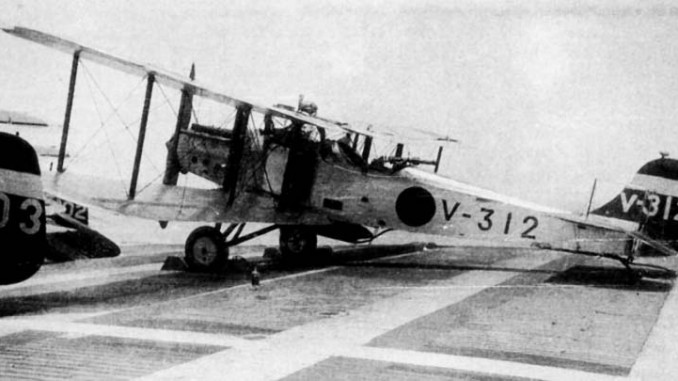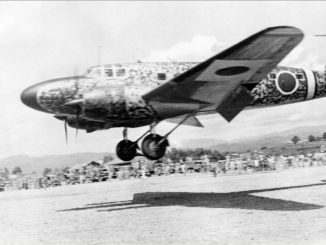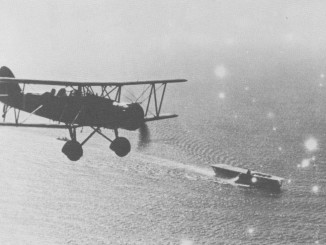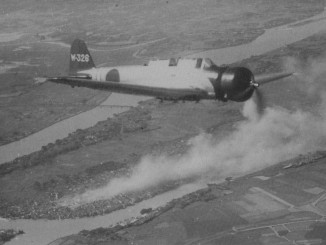
Originally designated the 2MT, the Mitsubishi B1M was designed by Herbert Smith, formerly of the Sopwith company which had produced a number of famous fighter designs. The 2MT was the first Japanese aircraft capable of carrying and launched aerial torpedoes. The aircraft flew for the first time in 1923, and was accepted for service with the Japanese Navy with the designation ‘Type 13’ because the design was accepted in the 13th year of the Taishō era.
The Type 13 was a biplane with fixed undercarriage, as was standard for the era. It had a crew of 2, a pilot and a navigator. It was originally powered by a Napier Lion engine which could produce 500hp, but this was replaced in later versions by a 450hp Mitsubishi Hi engine. The Type 13 could carry a single 18in aerial torpedo or 250kg of bombs slung under the belly
The Type 13 flew from the aircraft carriers Kaga and Hosho during the Shanghai Incident, attacking Chinese troops around the city. During one raid on the 22nd of February, a Type 13 was shot down by the American contractor Robert M. Short, who was flying a Boeing 218.
By the time of the Shanghai Incident the Type 13 was already being replaced by the Mitsubishi B2M Type 89, and by the time the ‘China Incident’ started in 1937 the older model had been completely withdrawn from service.
| Mitsubishi B1M3 Type 13 | |
| Role | Carrier attack bomber |
| Crew | 3: Pilot, Navigator, Radioman |
| Powerplant | 1x Mitsubishi Hi (450hp) |
| Speed (max) | 130mph |
| Ceiling | 14,800ft |
| Range | |
| Armament | 4x 7.7mm machine guns (2 fixed forward, 2 on flexible rear mount) |
| Ordnance | 1x 18in torpedo, 500kg bombs |
| Dimensions (L/W/H) | 32ft 1in / 48ft 6in / 11ft 6in |
| Weight (empty/max) | 3,179lb / 5,946lb |




Leave a Reply